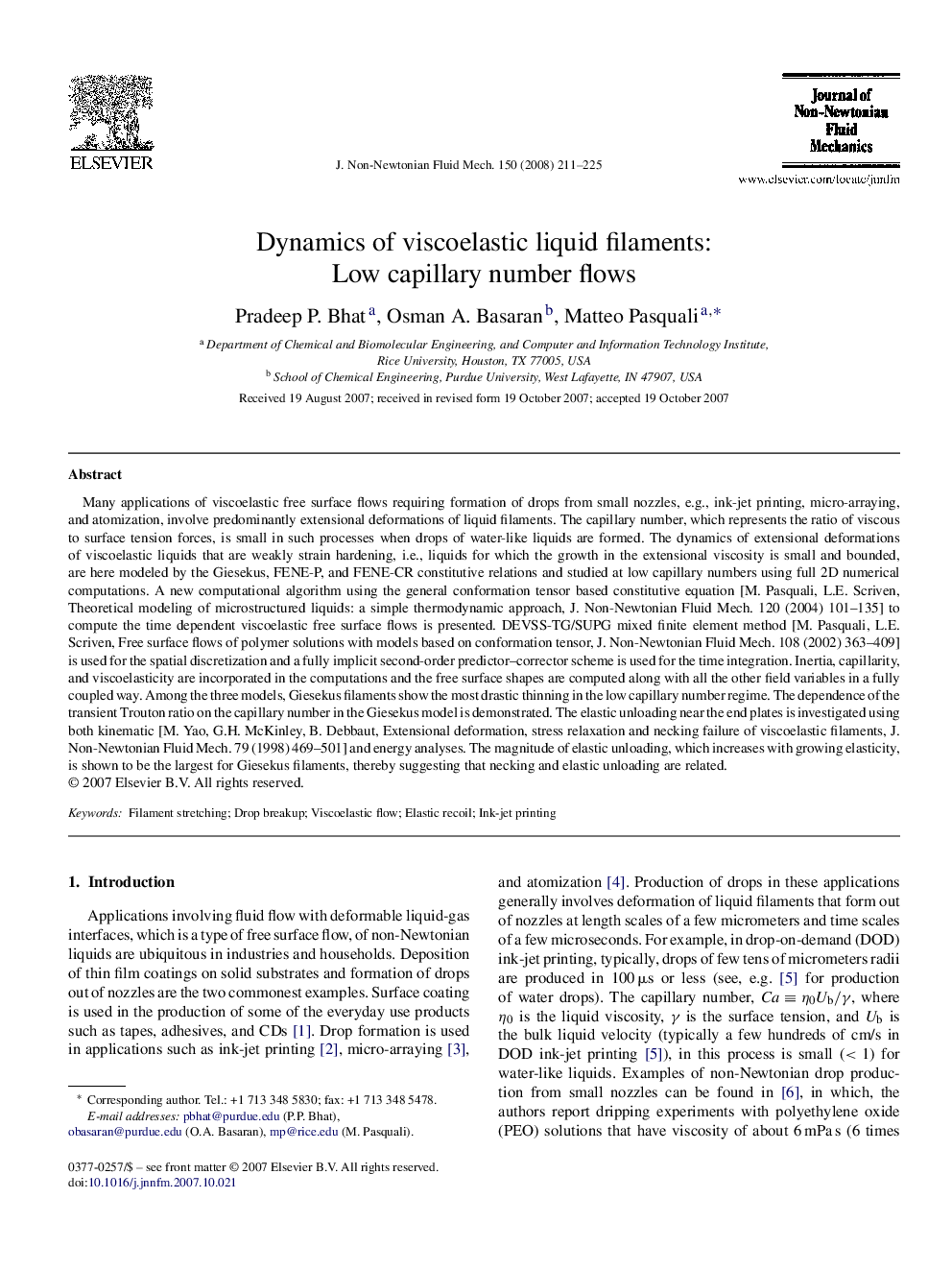| Article ID | Journal | Published Year | Pages | File Type |
|---|---|---|---|---|
| 671554 | Journal of Non-Newtonian Fluid Mechanics | 2008 | 15 Pages |
Abstract
Many applications of viscoelastic free surface flows requiring formation of drops from small nozzles, e.g., ink-jet printing, micro-arraying, and atomization, involve predominantly extensional deformations of liquid filaments. The capillary number, which represents the ratio of viscous to surface tension forces, is small in such processes when drops of water-like liquids are formed. The dynamics of extensional deformations of viscoelastic liquids that are weakly strain hardening, i.e., liquids for which the growth in the extensional viscosity is small and bounded, are here modeled by the Giesekus, FENE-P, and FENE-CR constitutive relations and studied at low capillary numbers using full 2D numerical computations. A new computational algorithm using the general conformation tensor based constitutive equation [M. Pasquali, L.E. Scriven, Theoretical modeling of microstructured liquids: a simple thermodynamic approach, J. Non-Newtonian Fluid Mech. 120 (2004) 101-135] to compute the time dependent viscoelastic free surface flows is presented. DEVSS-TG/SUPG mixed finite element method [M. Pasquali, L.E. Scriven, Free surface flows of polymer solutions with models based on conformation tensor, J. Non-Newtonian Fluid Mech. 108 (2002) 363-409] is used for the spatial discretization and a fully implicit second-order predictor-corrector scheme is used for the time integration. Inertia, capillarity, and viscoelasticity are incorporated in the computations and the free surface shapes are computed along with all the other field variables in a fully coupled way. Among the three models, Giesekus filaments show the most drastic thinning in the low capillary number regime. The dependence of the transient Trouton ratio on the capillary number in the Giesekus model is demonstrated. The elastic unloading near the end plates is investigated using both kinematic [M. Yao, G.H. McKinley, B. Debbaut, Extensional deformation, stress relaxation and necking failure of viscoelastic filaments, J. Non-Newtonian Fluid Mech. 79 (1998) 469-501] and energy analyses. The magnitude of elastic unloading, which increases with growing elasticity, is shown to be the largest for Giesekus filaments, thereby suggesting that necking and elastic unloading are related.
Related Topics
Physical Sciences and Engineering
Chemical Engineering
Fluid Flow and Transfer Processes
Authors
Pradeep P. Bhat, Osman A. Basaran, Matteo Pasquali,
